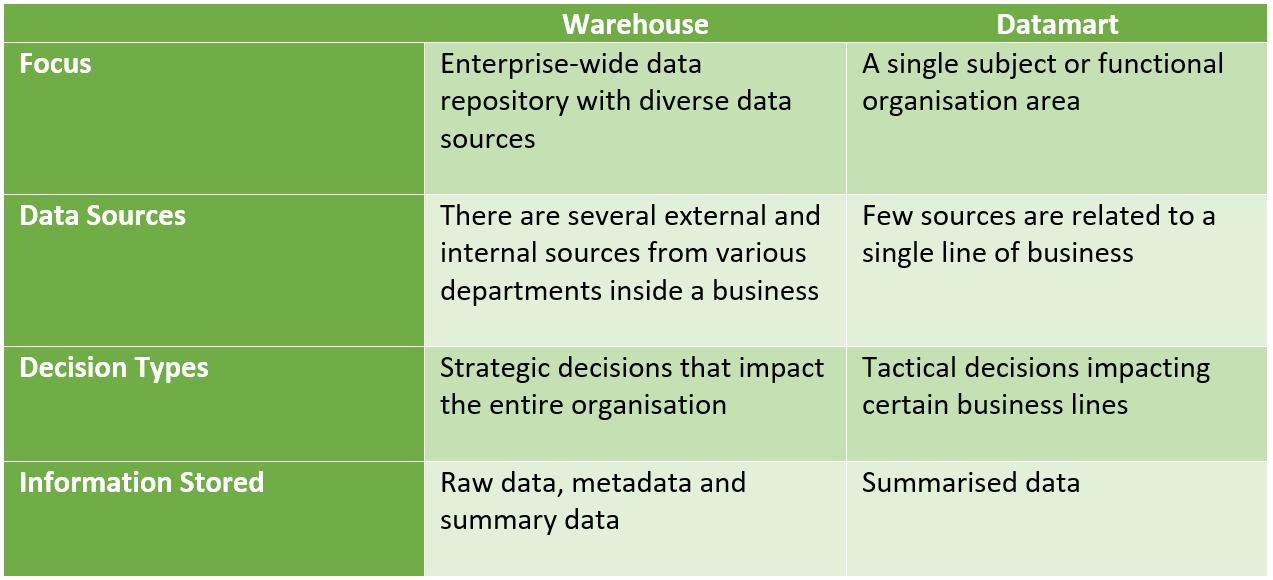Power BI Blog: Datamarts – Part 3
8 December 2022
Welcome back to this week’s edition of the Power BI blog series. This week, we look at the differences between a datamart and a data warehouse.
Datamarts are self-service analytics solutions, enabling users to store and explore data that is loaded in a fully managed database. Since datamarts are usually a subset of the full database, teams can be given access to the information they require only, enabling them to share relevant data and insights within those teams.
Last week, we looked at the most common forms of datamarts. This week, let’s consider the differences between datamarts and data warehouses.
A data warehouse is a vast, centralised repository of data that contains data from multiple sources within a company. Through analysis, reporting, and data mining technologies, this collected data is utilised to drive corporate decisions.
A datamart, however, is a single source of data for just one department (e.g. sales, customer services or marketing). The following table summarises the main differences:

Datamarts can be created to reduce the processing time that would be required to perform analytics against an entire data warehouse. Since datamarts in Power BI may be maintained by Power BI users, rather than the IT department, changes can be applied more quickly without waiting for tasks to be queued for action by the IT department.
Next time, we will begin to explore the preview of datamarts in Power BI.
Check back next week for more Power BI tips and tricks!

